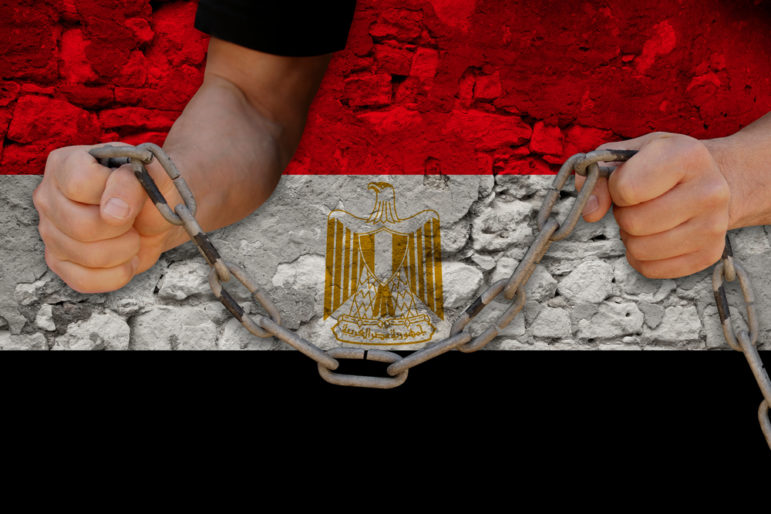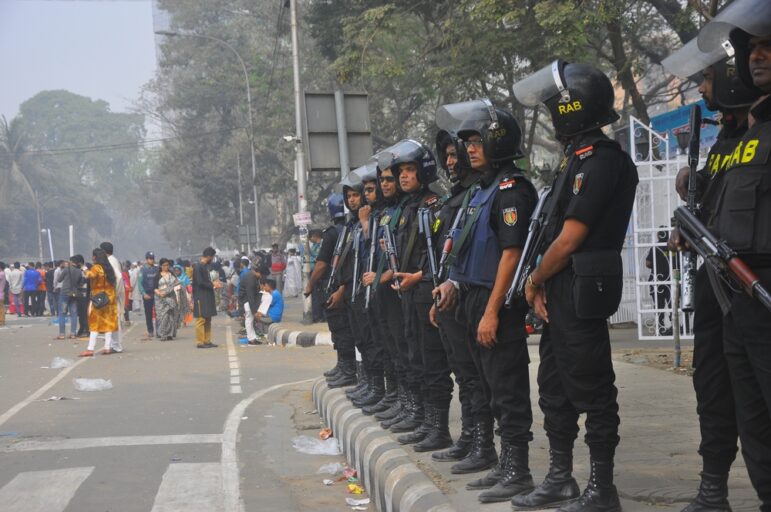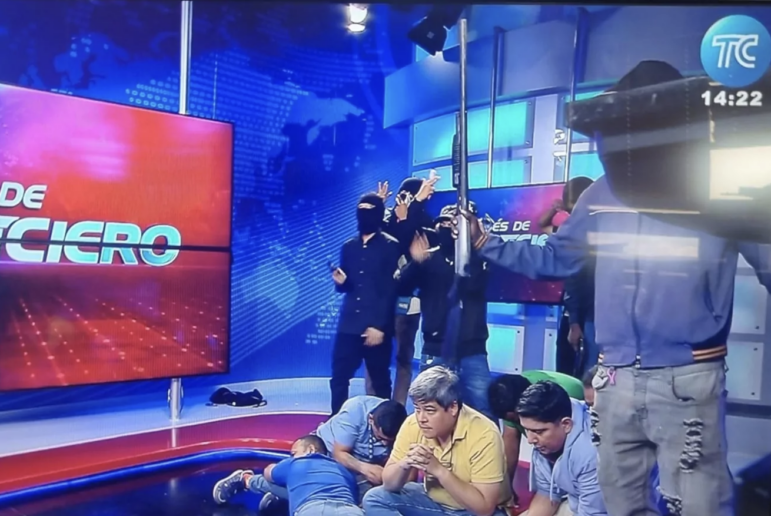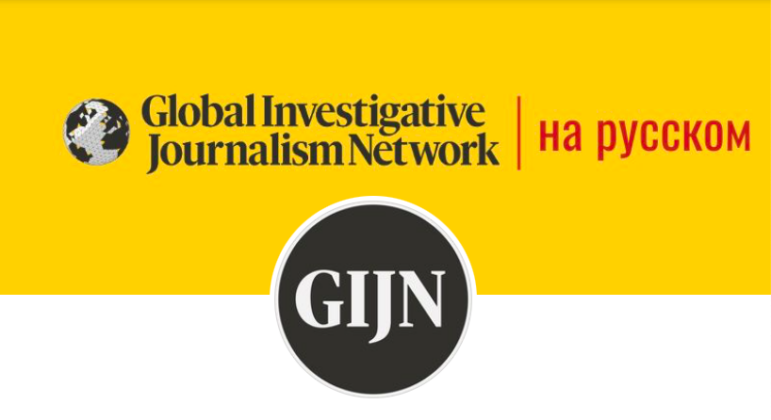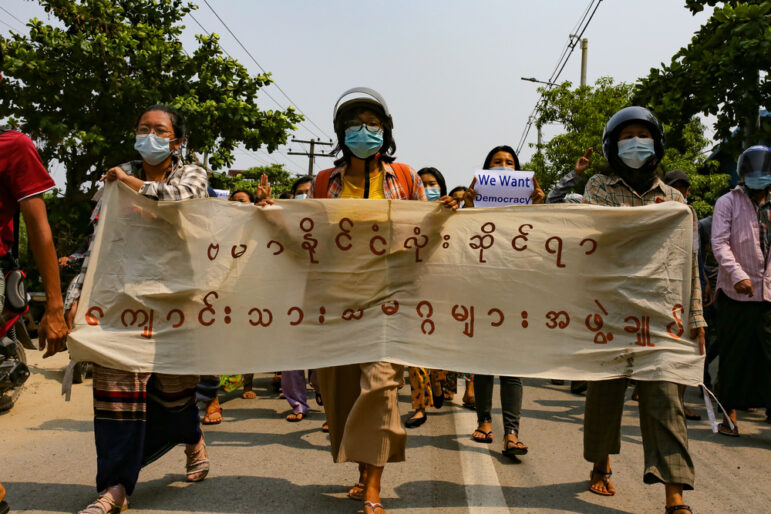

Independent Media Rebuilds Inside and Outside Myanmar After Violent Coup
Read this article in

After the 2021 coup, protesters marched on the streets calling for freedom and for the release of Myanmar’s ousted civilian leader Aung San Suu Kyi. Image: Shutterstock
As Myanmar’s bloody coup ticks over into its third year, local journalists continue to struggle to sustain and build independent media voices in support of democracy both inside the country and in the growing refugee diaspora.
It’s an evolving ecosystem depending on an underground network, including citizen journalists, philanthropic support, experimentation in distribution and voices — and raw courage in the face of violent oppression by the Tatmadaw military junta.
The military broke the old system.
“I didn’t want to give up this job. But since the coup, journalists can’t report freely and have to worry about their and their relatives’ safety. So I had to flee,” says a young woman print and TV reporter, now in Thailand.
Journalists were among the first to be hunted down after the military coup, led by General Min Aung Hlaing on February 1, 2021, along with opposition politicians, social workers, and activists. In the two years since, four journalists — all working in local media or as freelancers — have been killed and 145 arrested. About 60 remain in detention.
It effectively dismantled the network of democratic media that had spread across the country over the previous decade. Instead, the Myanmar junta became the world’s biggest jailer of journalists relative to population and the Committee for the Protection of Journalists listed Myanmar as the third-worst country worldwide for jailing journalists.
Still, the military’s attempts to control the media landscape did not stop a surge in independent outlets and content creation. This period also saw a decrease in the popularity of state-controlled media.
Two years after the coup, the top media by audience remain the trusted four: BBC Burmese, Mizzima, Democratic Voice of Burma (DVB), and Voice of America (VOA).
All struggle to monetize this audience, especially as digital advertising prices have collapsed in Myanmar. One million online impressions earns media companies US$10, compared to $570 in Europe and $130 in Thailand.
Social media distribution has been constrained as Meta’s platforms have been banned in Myanmar. Now, only half of the country’s internet users who have access to VPNs can still access Meta. According to a survey by the News Consulting Group, only a third of Myanmar Meta users actively use Facebook as a main source of news.
“We have problems with Facebook because they don’t understand that we are covering a war so they regularly categorize our account as ‘Page at risk,'” the founder of one local media outlet covering Myanmar central complains. “But only local media are punished for community violations when they publish videos of violent acts, not the big media. So when they block our audience, even though we have one million followers, we only reach 1,000 people per post.”
As the usual revenue models of subscriptions, advertisements, and events are denied independent media, most have turned to philanthropic grants to remain sustainable.
This has created an imbalance between the mainly English-language national media and the more poorly resourced, mostly local, media in Myanmar’s languages who lack staff dedicated to accounting or human resource management. Delays in transferring funds also disadvantages reporters relying on grants for their income.
“We know how to write stories but we don’t know how to write proposals or grant forms,” said one local editor. “Our English skills are not good enough to fulfill the diverse requirements of international organizations, so we get less financial support than the big national media.”
Most independent media have been forced to operate underground or from abroad, mainly in Thailand, Bangladesh, and India. At least a thousand Burmese journalists are estimated to be living in exile since the coup, a third of them in Thailand, often without refugee protections or the legal status that would allow them to pursue professional or educational opportunities. Their properties in Myanmar can still be seized and destroyed, and their relatives are vulnerable to being taken hostage, which puts pressure on them to keep quiet.
It’s a “one foot in, one foot out” model that brings big challenges. Despite that, Myanmar’s journalists keep performing their duty of keeping their communities informed. And in-country, local media keeps providing a key link.
“Local media have built a very reliable network of sources over the years: they are our friends, relatives, neighbors,” one local editor explained. “Even the media based in exile can still use the network to reach sources inside the country.”
But they face greater risks, too, and have a responsibility to protect those sources — including from unwanted exposure by national or international media.
Hundreds of trainers conduct online and in-person capacity-building training sessions in mobile reporting, investigation, digital safety, and feature writing. Organizations such as Myanmar Witness or the Centre for Law and Democracy teach both citizen journalists and professional journalists to gather evidence of war crimes that could be used in international court cases.
Despite electricity and internet cuts, new distribution formats are being tested and developed, such as SMS, newsletters, and podcasts.
One prominent example is Kaladan media, the first Rohingya News Agency, which has been based in Bangladesh since 2001. They are one of the founders of the Burma News International (BNI), a network of 15 independent media groups led by exiled Burmese journalists in India, Bangladesh, and Thailand that was launched in 2003.
“We have been consistently challenging, monitoring, and investigating the Burma Army Islamophobic narrative. During anti-Muslim violence in Myanmar, our website was hacked for six months and we were blocked on Facebook numerous times because of some users abusively reporting us. Our people don’t have easy access to the internet so we launched a 30-minute daily news bulletin, which is broadcasted in communal meeting places in refugee camps via loudspeakers,” Tin Soe, the editor-in-chief of the Kaladan Press Network, explains.
Frontier Myanmar continues to run the program Doh Athan (“Our Voice”) and local media such as Delta News Agency for the Irrawaddy region and Myaelatt Athan for Sagaing and Magway regions launched podcasts and weekly TV shows.
“We have three podcasts, one about news, one about healthcare, and one is called ‘Letter from People Defence Forces,’” said a representative for Myaelatt Athan. “We are reading on-air letters of pro-democracy fighters to their relatives or girlfriends. It’s a nice format that allows us to connect them with the people as they are trying to survive underground and are isolated from everyone.”
Dr. Miemie Winn Byrd, adjunct fellow at the East-West Center, emphasizes: “A successful revolution is at least 75% communication. In the context of Myanmar, I see the way forward as systematizing the defection of soldiers, focusing on people’s support, and keeping up the international interest.”
In the spirit of building bridges between skills and nationalities, the collective Visual Rebellion Myanmar was co-founded after the coup by Burmese media students and international creatives [Editor’s note: including the author of this piece.] A newsroom of journalists and artists based inside Myanmar and around the world produces together in-depth features, research reports, photo stories, and documentaries about the impact of the coup from a human perspective. Some of the best content is adapted and translated into other languages, such as a series for the French investigative outlet Mediapart.
Visual Rebellion is committed to prioritizing story angles where people are agents and not only victims of their fates. This includes the unionization of Myanmar migrant workers in Thailand, the founding of a photo magazine by Rohingya people in Cox’s Bazar refugee camp, women fighting frontline battles, and grassroots coping mechanisms for surviving the economic crisis generated by the coup.
After a year-long scorched-earth campaign in the central plains by military troops, one member of the collective who is native to the area explained: “I can’t write about dead bodies and burned villages anymore because it is repetitive in its horror, it publicizes terrorist actions by the junta, which has a deep impact on the morale of the people, and it has a huge impact on my mental health as I know the areas and people targeted very well since childhood. We need to find other ways to tell the story.”
As it is estimated that 75% of the stories published by Burmese media are coup or conflict-related, several audience surveys show a phenomenon of “coup fatigue.” People would rather read about commodity prices, health, education, and agriculture, as well as stories about the weather, refugees, and on business and international affairs.
Local Journalists on the Front Line
As most international and national media pulled their staff out of Myanmar, they rely for on-the-ground information on citizen reporters who send information, pictures, and videos from their phones and are poorly paid, or not paid at all.
It’s forcing a division in the Myanmar media community with different treatment between management-level editors who are often safely relocated abroad and on-the-ground, junior reporters who survive on their own in precarious situations. National and international media often use content gathered by local media without compensation.
“Relying on non-professional media workers carries big risks: they struggle with emotional distance, take low-resolution pictures, send them to all media houses and then face copyright issues, some share names of sources online, and most are not trained enough to check accuracy,” says Toby Mendel, executive director for the Centre for Law and Democracy. “Digital, physical, psycho-social and legal safety is a precondition for producing professional journalism and local citizens can’t fill the void without being given the proper tools.”
The pauperization of the information sector post-coup has pushed down media rates and professional reporters still present in the country now get offered citizen reporter wages. Media workers lack the negotiating power and industry body to obtain fair wages and safety measures, as denounced in the Anti-Theft Wage Campaign by the International Federation of Journalists.
The division drives internal mistrust. The founder of a local media organization in hiding in a Thai-Myanmar border town says: “We try to identify military propaganda accounts by the terms they use to refer to the junta. We also know that some ‘journalists’ come to border towns in Thailand to spy on real reporters in exile and report to the military back in Myanmar. Some journalists who were working for pro-military newspapers even get hired by independent media houses nowadays because there is no background check and clearance process anymore. Now anyone can apply for a media job via [Facebook] Messenger by sending some pictures and footage and claiming experience after having attended a two-week training for citizen reporters.”
A group of reporters in exile has started a consultative process with independent media houses with the goal of creating a new code of conduct, freed from business or military chains, be it from the Burmese Army or opposition forces. They also lobby the body in charge of drafting a Federal Democracy Charter, to include a clause about press freedom and journalism protection in the future constitution.
Whichever political situation emerges from the ongoing conflict, the journalistic community is already engaged in healthy debates about implementing policies of self-regulation, rethinking ownership structure, and pushing for inclusion as well as gender and ethnic diversity. A balance between external support and internal reflection is the way for Myanmar media to survive the war of information that is raging in the country.
This story was original published by the International Press Institute (IPI) and is republished here under a Creative Commons license. It has been lightly edited for style. You can see the original here.
Additional Resources
Amid a Press Crackdown in Myanmar, One News Site Survives on Reader Revenue
Will Myanmar’s Press Crackdown Muzzle Reporting on Environmental Crimes?
‘Reporting from the Outside’: Lessons from Investigative Journalists in Exile
 Laure Siegel is a reporter based in Southeast Asia and the founder of Visual Rebellion, a site where Burmese journalists, photographers, filmmakers, and artists can publish their work. Visual Rebellion was founded in the aftermath of the 2021 coup. Siegel is a reporter for the French outlet Mediapart and has worked for Nikkei Asia and French-German public TV channel ARTE.
Laure Siegel is a reporter based in Southeast Asia and the founder of Visual Rebellion, a site where Burmese journalists, photographers, filmmakers, and artists can publish their work. Visual Rebellion was founded in the aftermath of the 2021 coup. Siegel is a reporter for the French outlet Mediapart and has worked for Nikkei Asia and French-German public TV channel ARTE.

